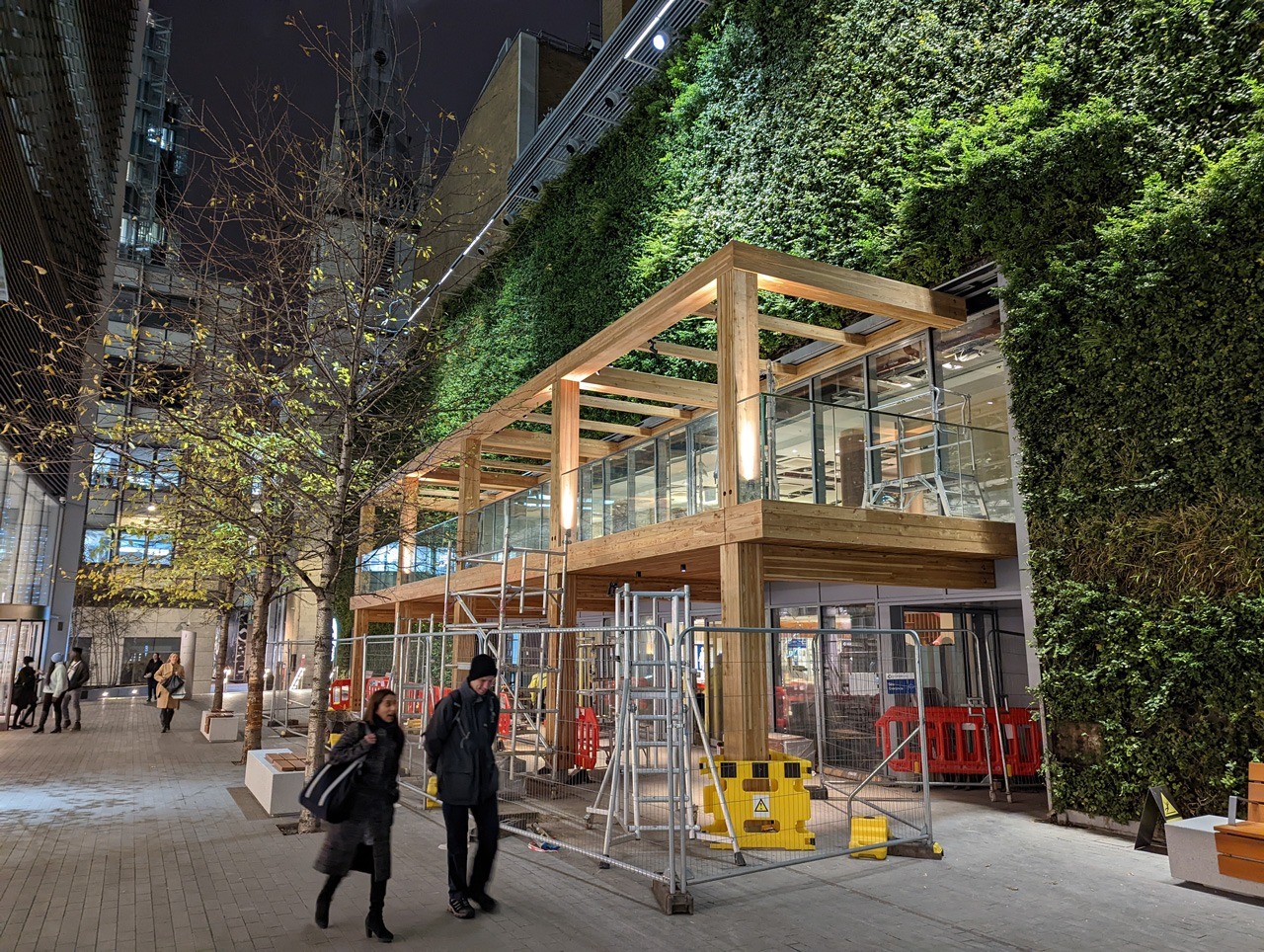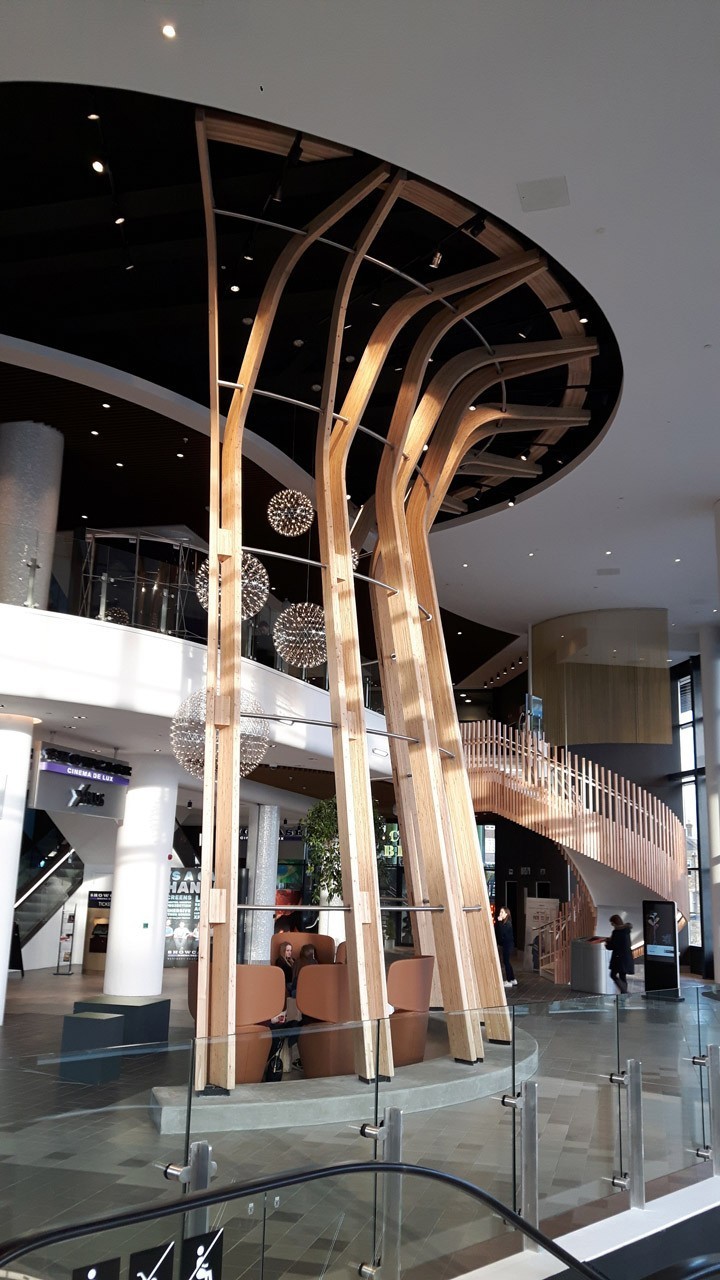Glulam Species: Why Use Larch?
BACK TO BLOG MAIN PAGE
Did you know larch was given its name after an attack on a stronghold called Larignum by Caesar in the Swiss Alps?
The wood from local trees used to build a tower to protect the stronghold was undamaged by flames set by Caesar’s army. Upon seeing the undamaged wood, the villagers in the stronghold were asked where the wood came from, and they pointed to the trees nearby. As the stronghold was named Larignum, the trees were named larch!

Sky Garden Welcome Centre
Where does larch come from?
Larch are native to the cooler climates in the northern hemisphere. They are found in the boreal forests of Canada and Siberia, in the mountainous areas across the Bavarian and Swiss Alps, western Poland through to the Carpathians, and have been planted extensively across Greenland, Iceland and the US.
First introduced to the UK in the early 1600s. These deciduous conifers (although they lose their needles in the autumn) have needle-like leaves and cones, and like many types of pine trees, can grow on average from about 20 to 45 metres, with the tallest reaching up to 60 metres.
What are the differences between larch varieties?
Siberian larch, while technically classed as a softwood because it comes from a coniferous tree, is known as one of the hardest softwoods. Due to the adverse climate conditions in which it populates, it grows at an extremely slow rate and is dense. Siberian larch is a yellow/brown colour with knots that have a slightly more grey tone. (We’re not currently importing Siberian larch, see here for more details.)
European and UK larch is a timber we use a lot at Buckland for our glulam, and we’re lucky to have a pretty decent supply right on our doorstep. While it is very similar to Douglas fir, it is more of a pale yellow in colour. While not as tough as Siberian larch, it is very hardy and suitable for most projects we work on.
American larch (also known as Tamarack) has a conical shape, flaky reddish-brown bark, soft feathery needle foliage, and small cylindrical cones. The wood of the American larch is a light brown colour and is known for being strong, hard and heavy.
Japanese larch has a long trunk with lots of horizontally spreading branches. The wood of the Japanese larch ranges from a reddish-brown to yellow, with a straight grain and moderately durable level of rot resistance. It’s very similar to European larch and some even grows in Britain.

Westquay Shopping Centre
What are the benefits of using larch glulam?
Larch is durable, stable and is fairly robust. The heart-wood has good rot and water-resistant properties and can withstand the elements. It doesn’t necessarily require extra treatment, has a nice appearance with multiple options of grain patterns and colours, and is easy to stain. TRADA class the heartwood (redder looking wood) as moderately durable and the sapwood (whiter) as non-durable.
There is minimal shrinkage when it dries which helps avoid unsightly cracks, and while it has some knots they are usually small. It also has natural insect-resistant properties. Because larch comes from coniferous trees, it is more readily available and generally reasonably priced. Larch is excellent for using in glulam because it is easy to work with, glues well and is visually appealing.

Sky Garden Welcome Centre
Can larch be used outdoors?
Because of the conditions in which it grows, larch is renowned for being durable, waterproof and resistant to rot, making it an excellent timber for exterior cladding and decking. It is a popular timber for making hull planks thanks to the long straight wood veins, lightness and the ease with which you can bend it compared with other timbers. However, the lifespan of a softwood used externally will be limited and we always recommend external larch glulam is still treated and maintained.
When it comes to glulam, different types of larch can be used in lots of interior and exterior projects, including external cladding, decking, siding, flooring, beams and frames. Here are a few of our favourite larch projects:
We’re not currently importing Siberian larch, see here for more details.
Read more about other timber species we use at Buckland.